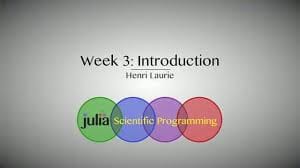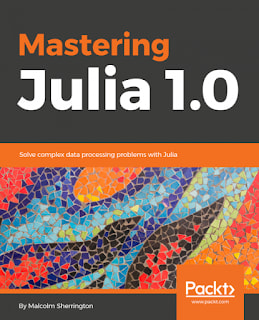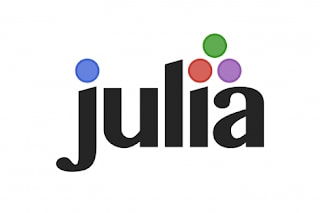Disclosure: This post includes affiliate links; I may receive compensation if you purchase products or services from the different links provided in this article.
Hello guys, if you are looking for a new, modern programming language to learn in 2020, then let me introduce you to Julia programming language. Julia is a high-level, high-performance dynamic programming language developed specifically for scientific computing, but it has uses in Big Data, Data Science, and other computing-intensive industries.
The Julia programming language is actually designed to address the requirements of high-performance numerical and scientific computing while also being useful for general-purpose programming.
Julia is also one of the most loved programming languages on StackOverFlow's Developer survey and created with the vision to take the best things from other popular mainstream programming languages.
Its mission statement says that Julia should be as right as R for doing statistical computation, as smooth as Perl for String processing, and will match Matlab for doing mathematical calculations like linear algebra. Still, at the same time, it should be easier to learn and work with.
Julia has many uses in real-world programming; you can use Julia for Data Science as well. With its blazingly fast compilation of code and high-performance parallel execution, Julia continues to attract new developers who will expand its domain.
Also, because of its extensive mathematical library and support for cloud computing, the language is gaining popularity among data scientists and is increasingly being used for big data projects.
If you want to learn Julia in 2020 and looking for some useful resources like books, courses, and free tutorials, then you have come to the right place. In this article, I am going to share some of the best courses to learn Julia Programming language in 2020.
Top 5 Books and Courses to learn Julia in 2020
As I have told you, Julia is a new programming language developed at MIT and taught in major universities such as Stanford, Cornell University, Purdue University, and so on.
It gathers the best practices from interpreted languages like Python, Ruby, Javascript, and the best from compiled languages like C/C++ and FORTRAN. It is easy to learn, yet very practical to do real development work.
1. Getting Started With Julia (Udemy)
There are not many courses to learn Julia Programming language on Udemy, but whatever I have found, this seems to be the best course to learn Julia on Udemy.
In this course, you will learn how to download and install Julia, set up your own development environment, setup, and editor, and use Julia REPL for development.
It has a very structured curriculum, and you will learn everything you need to know about Julia Programming language like basics, working with Types, I/O, Modules and packages, Object-Oriented Programming, and Functional Programming with Julia.
This course is created by Packt Publishing, along with instructor Erik Engheim. This is a comprehensive course, and it's packed with 10 hours of content, which means if you need just one class to learn Julia in-depth, you can use this one.
2. Julia Scientific Programming (Coursera)
This is another engaging and informative course to learn Julia from scratch. This four-module course introduces you to Julia as a first language. In this course, you will learn
- How to write your own simple Julia programs from scratch
- Understand the advantages and capacities of Julia as a computing language
- Work in Jupyter notebooks using the Julia language
- Use various Julia packages such as Plots, DataFrames, and Stats
The course is delivered through video lectures, on-screen demonstrations, quizzes, and practical peer-reviewed projects designed to allow you to work with the packages.
Like other Cousera courses, this is also free to audit. Still, if you want to access assignments, quizzes, and other course materials you need to join the course, I definitely recommend that. Doing those assignments will improve your coding skills and also help you to understand Julia better.
You'll also get a certificate for completing this course which you can add as a proof to your Julia expertise in LinkedIn and your own CV. A Big thanks to instructor Juan H Klopper and Henri Laurie, both Ph.D. for creating this engaging course to learn Julia.
3. Introduction to Julia (JuliaAcademy)
This is an excellent website to learn the Julia programming language. It contains a lot of free courses to learn Julia basics, Machine Learning foundations, Parallel computing, and other Julia related materials.
This is a 10-part course, and its curriculum is designed to enable beginner level programmers to get up to speed with Julia. The best thing about this course is that it's prepared by core Julia developers in collaboration with Julia Computing, which means you will learn from the most definitive sources.
If you are looking for a free resource to learn Julia, I suggest you check out courses from JuliaAcademy. Most of them are also free, so you can start learning Julia without spending any money now in 2020.
4. Mastering Julia 1.0 (Packt)
There are not many books to learn Julia out there, but whatever is available, I found the Mastering Julia 1.0 one of the better books to learn Julia from scratch.
This book starts with basics and then moves on to explore the latest improvements and features in version 1.0. It will gradually show you how to perform simple statistics and analytics with Julia, which will help you understand Julia's speed and performance capabilities, along with its applications in highly intensive computations.
The book also has separate detailed sections to explain the Julia type system and principles of multiple dispatches, assisting you with programming more effectively.
Further, into the book, you'll learn how Julia can be used to enhance graphics and data visualization. You will also learn to use the graphics processing unit (GPU) support while performing machine learning tasks in Julia. It also touches networking and distributed computing with Julia, other reasons for learning the Julia programming language.
5. Coding for non-programmers in Julia
This Julia beginner programming course is specially designed for beginners to programming. In this course, you will not only learn a powerful programming language taught at MIT and Stanford but also internalize practical programming techniques and habits.
This will help you become a good programmer and problem-solver, aiding you to learn other languages. By the end of this course, you will have the basics of Julia and be capable and confident to continue learning programming on your own.
No prior knowledge of Julia is needed, as we will start with the basics. Our aim is that you will feel confident starting to use Julia in your own work by the end of the tutorial!
That's all about the best courses to learn about Julia Programming language. It's modern, and one of the most loved programming languages and has great futures. Julia has many uses in Data Science, Machine Learning, and Scientific Programming.
It also encompasses best practices from different Programming languages, which makes it a productive language from the Developers' perspective. In fact, all trends show that Julia is growing, and if you want to learn a second programming language, Julia can be a great choice.
Other Programming Resources you may find useful
The 2020 Java Developer RoadMap
Top 10 Courses to Learn Python in 2020
Top 5 Courses to learn Rust Programming for Beginners
10 Programming languages to learn in 2020
5 Free Docker Courses for Java and DevOps Engineer
10 Courses to learn Spring Boot in 2020
10 Free Courses to learn Jenkins, Docker, and Maven
5 Free JavaScript Courses for Web Developers
5 Free Courses to Learn Java Programming
Top 10 Courses to learn JavaScript in 2020
Top 5 Courses to learn C Programming in 2020
Thanks a lot for reading this article so far. If you like Julia Programming language and these courses, then please share in your favorite platform (Facebook, Twitter, or LinkedIn). If you have any questions or feedback, then please drop a note.
























